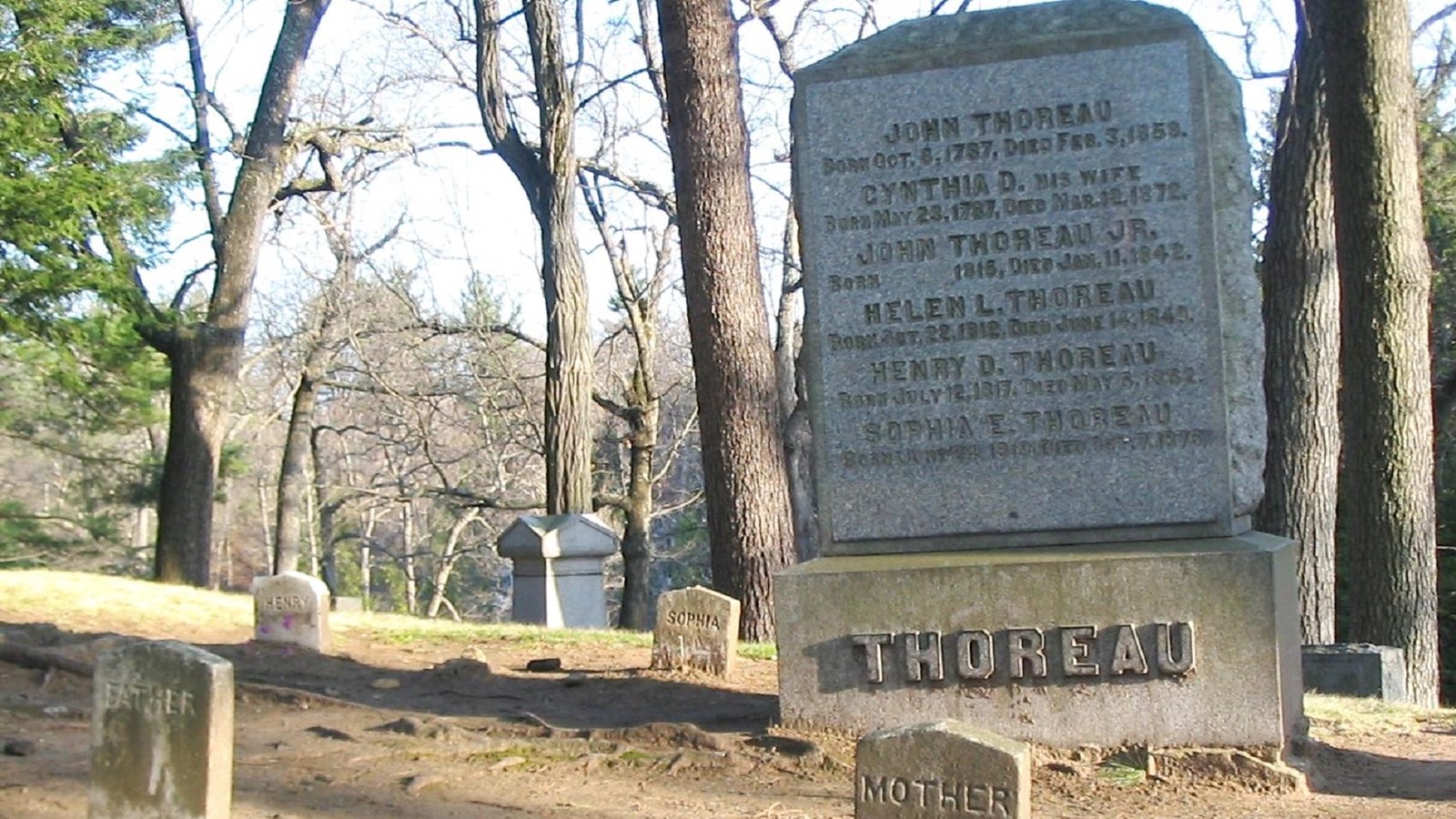Last updated: July 8, 2020
Place
Sleepy Hollow Cemetery

Photo by Bikeable, CC BY-SA 2.5, https://commons.wikimedia.org/w/index.php?curid=324137
Sleepy Hollow Cemetery in Concord, Massachusetts is a prime example of a 19th century rural New England cemetery. Horace Cleveland, who, along with Frederick Law Olmsted, is credited with the professionalization of landscape architecture, designed the 17-acre core of the cemetery. As with other rural or “garden” cemeteries, Sleepy Hollow’s design elements include gently curving roads adapted to the site’s natural contours and naturalistic plantings. Before its designation as a cemetery, local citizens called the area, a hilly part of the Deacon Reuben Brown farm, “Sleepy Hollow.” Townspeople, including local Transcendentalists Ralph Waldo Emerson and Henry David Thoreau and author Nathaniel Hawthorne and his wife Sophia, used Sleepy Hollow as a favorite spot for evening walks. While planning for Sleepy Hollow’s transformation into a cemetery, designers sought to maintain the natural beauty of Concord’s first large, designed landscape set aside for public use.
Ralph Waldo Emerson gave a principal address at the September 29,1855 dedication ceremony for Sleepy Hollow Cemetery. In his speech, Emerson described the establishment of Sleepy Hollow Cemetery as part of a national campaign, noting:
A simultaneous movement has, in a hundred cities and towns in this country, selected some convenient piece of undulating ground with pleasant wood and waters; every family chooses its own clump of trees; and we lay the corpse in these leafy colonnades.
Emerson’s speech refers to the idea that cemeteries like Sleepy Hollow and nearby Mount Auburn might serve multiple purposes for the community, their park-like settings serving as natural oases and sanctuaries where the living may contemplatively pay respect to the deceased and nature alike.
While Cleveland’s plans formed the nexus of Sleepy Hollow’s design, actual implementation of that design fell to prolific Concord local John S. Keyes. Keyes “drove the stakes for the lots and saved as many trees as possible from cutting,” an enterprise honored by his simple epithet on the giant boulder marking his grave: “The Founder of the Cemetery.” On April 19, 1855 (the anniversary of the 1775 Revolutionary “shot heard round the world”), during the community organized “Tree Bee,” volunteers planted over 100 trees.
Near the apex of the cemetery is Cat’s Pond, a manmade body of water laid out by Henry David Thoreau. In 1860, a year after the pond’s completion, Thoreau, noticing lilies and other plants growing in the pond, meditatively observed, “in the midst of death we are in life.”
Sleepy Hollow inspired the writings of Emerson, Hawthorne, Thoreau, and even became memorialized in William Ellery Channing’s poem “Sleepy Hollow.” The cemetery also became the final resting place of these authors. Their graves, alongside those of other notable New England authors, including Louisa May Alcott, are located in the area known as Author’s Ridge, a popular destination for tourists wishing to pay homage. As a community cemetery, Sleepy Hollow is also the burial site of several community members with important conservation connections. One of them, Samuel Hoar, donated the first parcel of land for what would become Great Meadows National Wildlife Refuge.
In his 1855 dedication speech, Emerson thoughtfully reflected on the future of Sleepy Hollow, positing:
…when these acorns that are falling at our feet, are oaks overshadowing our children in a remote century, this mute green bank will be full of history: the good, the wise, and the great will have left their names and virtues on the trees; heroes, poets, beauties, sanctities, benefactors, will have made the air tuneable and articulate.
Today, Emerson’s words ring prophetic through this nearly 100-acre property, 32 acres of which are listed in the National Register of Historic Places.
Sleepy Hollow Cemetery is located at 24 Court Lane and Bedford St., one block east of Monument Square in Concord, MA. For more information, visit the Concord’s Public Works Cemetery Division website, or visit the Friends of Sleepy Hollow website.
To discover more Massachusetts history and culture, visit the Massachusetts Conservation Travel Itinerary website.
